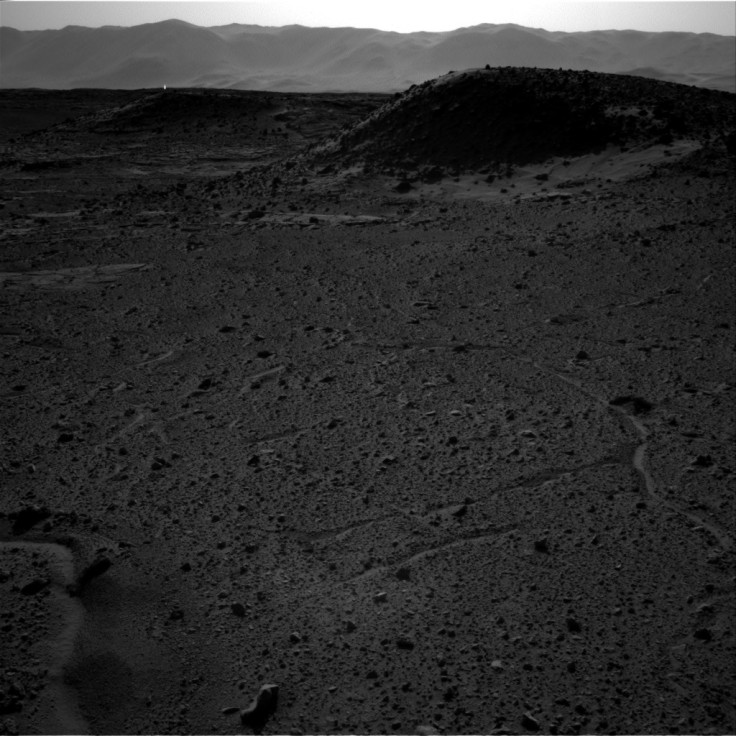Mystery Light on Mars Photo is No Proof of Intelligent Life, Says Nasa

Last week a Mars picture from Nasa's Curiosity rover captured a queer bright 'flame' which sparked a buzz among the UFO blogger crowd who wanted to interpret it as light coming from an underground beacon. But, Nasa thinks otherwise.
"The public can afford to speculate wildly but Nasa is an organisation internationally renowned for credible science," Ben Biggs, Editor at All About Space magazine, told the Dailymail.
"It needs to exhaust every other likely explanation before it can begin to explore less realistic phenomena.
"While the 'light' is as yet unexplained, it's quite a leap to assume that it has an intelligent source," he said.
However, blogger Scott Waring was rather impatient with this stance, and was not satisfied with Nasa's theories.
"Sure Nasa could go and investigate it, but hey, they are not on Mars to discover life, but there to stall its discovery," he wrote on his website.
"This could indicate there is intelligent life below the ground and uses light as we do."
He claimed that the picture taken by Curiosity rover suggested intelligent creatures living underground
"This is not a glare from the sun, not is it an artifact of the photo process...Look closely at the bottom of the light.
"It has a very flat surface giving us 100 per cent indication it is from the surface."
Nasa has provided reasons why the bright light is nothing out of the ordinary.
The rover is fitted with 17 cameras and takes most pictures using two of its cameras, one fitted on its right side and the other on the left.
Nasa said that the image from the right camera showed the 'shooting flame', but the camera on the left did not, which led the researchers to broadly conclude that this was just a trick of light.
Engineers at the agency say that the glow was probably caused by sunlight hitting the camera's sensors through a vent hole in the camera housing.
"The rover science team is also looking at the possibility that the bright spots could be sunlight reaching the camera's CCD [charge-coupled device] directly through a vent hole in the camera housing, which has happened previously on other cameras on Curiosity and other Mars rovers when the geometry of the incoming sunlight relative to the camera is precisely aligned," Justin Maki, Nasa imaging scientist, told Space.com.
Other scientists also offered similar views as Maki.
Doug Ellison, an imaging expert at Nasa's Jet Propulsion Laboratory, attributed the bright flame to a "cosmic ray hit" on the camera, as it was not captured by its twin on the left in photographs taken at the same time.
The view was also backed by a Surrey Space Centre's researcher Chris Bridges, who said that this was "most likely a galactic cosmic ray (GCR) hitting the imager."
Besides these explanations, several other hypotheses were put forward by the scientists.
"One possibility is that the light is the glint from a rock surface reflecting the sun," Maki told the Houston Chronicle.
"When these images were taken each day, the sun was in the same direction as the bright spot, west-northwest from the rover, and relatively low in the sky."
The Curiosity rover arrived at the area called 'the Kimberley' last week, which has four different types of intersecting rocks, making it an interesting location for further probe.
The rover is scheduled to drill and analyse rock samples at Kimberley over the next few weeks.
© Copyright IBTimes 2025. All rights reserved.





















